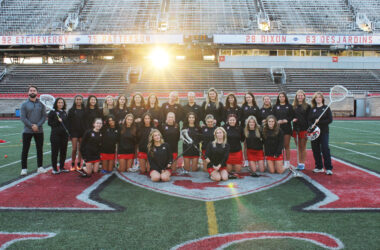In a little less than two weeks from now, football fans around the world will be glued to their television sets as Superbowl XLIV kicks off in south Florida. Before the football hangover has time to wear off completely, we’ll be turning our sights to the Canadian west coast, as the Olympic torch arrives in Vancouver to tip off the Winter Olympic games. Fast forward a week into March, and we’re smack dab in the middle of the NCAA basketball tournament. And as soon as the Madness comes to a halt, it’s time for the NHL and NBA playoffs! February, March, and April are without a doubt the most important and exciting months in the sporting year, and as all these momentous events approach, now is a good time to reflect on the extent to which McGill has helped shape three of the major sports we enjoy playing and watching today.
Gridiron genesis
The game of football is a relatively new sport that only developed its contemporary set of rules in the last 150 years. Football originated from the game of rugby, which was developed in England during the 19th century. The game was introduced to North America by British soldiers stationed in Canada, and it caught on quickly at Canadian universities.
In its earliest days, the rules of football were incredibly fluid, and varied from school to school. As each school practiced different versions of football, disagreements about how the game was played inevitably arose. In the United States, the few Northeastern schools that played football attempted to establish a universal set of rules for the game. Harvard, though, refused to play by the proposed set of rules, which disallowed carrying the ball. Unable to find competition in the United States, America’s top school looked north of the border for a suitable opponent.
The 1874 game between McGill and Harvard is considered the first game of modern football. The two teams were able to compromise on a set of rules which were soon adopted by other universities in the United States, and the game – which lasted a full two days – led to the birth of modern American football.
History on ice
In the early 1800’s, another sport was developed in Canada and came to fruition at McGill. The origins of this game came from an early version of lacrosse called dehuntshigwa’es, first played by the indigenous peoples of Nova Scotia. European settlers took a liking to the game, decided to play it on ice, and Canada’s national sport was born.
As ice hockey gained popularity, Montreal became the sport’s epicentre. On March 13, 1875, the first indoor hockey game was played in Montreal between two nine-player teams. Several of the participants were McGill students, who eventually teamed up to draft a set of rules for the sport and introduce the use of a puck rather than a ball. In 1877, the McGill University Hockey Club became the first organized ice hockey club in history.
The first hockey world championship tournament took place at the Montreal Winter Carnival in 1883, and the McGill squad came away victorious. Following the rise of hockey in Canada, the States and Europe soon adopted the game of hockey as well. Hockey was soon developed into a professional sport in the early 1900s, with the NHL appearing in 1917.
The real Dr. J
Perhaps McGill’s greatest claim to sporting invention, however, is the story of Dr. James Naismith. Naismith entered McGill in 1887, and lettered on the school’s football, soccer, and gymnastics teams. After graduation, Naismith returned to McGill as the school’s athletics director. In 1890, he moved to Springfield, Massachusetts to teach at the local YMCA. Due to the long winters in Springfield, Naismith worked to develop a game that could be played indoors year-round, yet necessitated the athletic aptitude and skill of outdoor sports such as football and lacrosse. One large ball and two elevated peach-baskets later, and Springfield was introduced to the game of basketball.
The first game of basketball was played in 1891 at Springfield College. Naismith later modified his original rules, incorporating backboards and allowing the use of a dribble to move the ball down the court.
Naismith would go on to coach basketball at the University of Kansas, and later became the school’s athletic director. Today, his name prefaces the basketball Hall of Fame in Springfield, and is inscribed by the NCAA on the award given annually to the top player in college basketball.
So as we prepare for the best the sports year has to offer – by stocking up on beer and paying our cable bills in advance – let’s all take a moment to recognize and celebrate the part McGill has played in the development of modern sports.








